Over the past 18 months, we have undertaken two separate user surveys to gather feedback on the length, content, and accessibility of our Economic and fiscal outlooks (EFOs). This article reports on the main messages from those surveys and how we plan to respond.
December 2021 survey
Our first user survey was conducted over December 2021 to the end of April 2022, six weeks following the publication of our October 2021 EFO which was of a more traditional length (245 pages) and format (executive summary, four main chapters, two annexes). We had 62 responses from a range of different types of readers including civil servants, journalists, private sector economists, academics and other researchers, and parliamentarians.
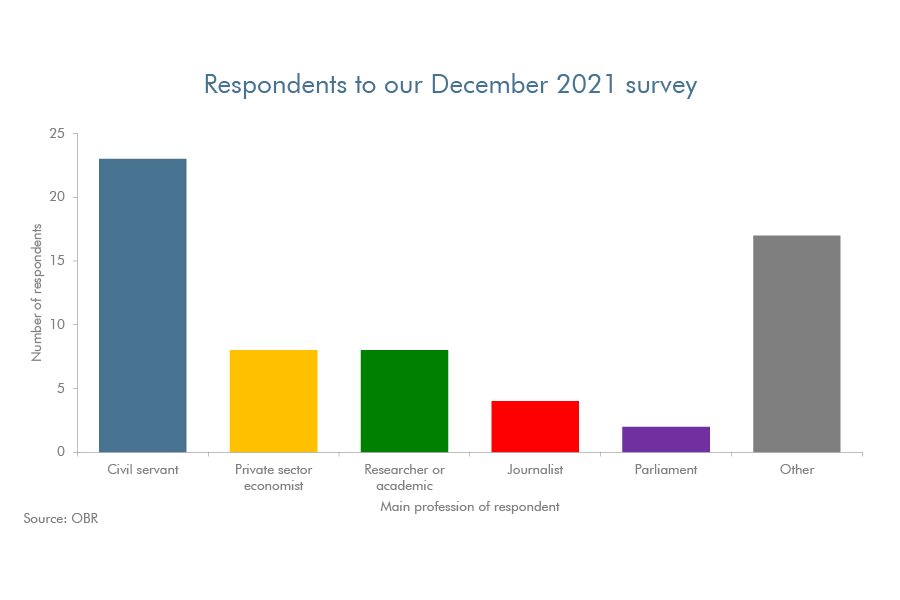
Feedback from users was largely positive, with 68 per cent saying they could find the information they were looking for in the EFO rising to 71 per cent of those who were looking for supplementary material on our website. We also found that 79 per cent of our users agreed our charts and tables were easy to understand and 81 per cent of users said it was useful to have everything in one document. However only 68 per cent found the structure of the EFO easy to follow and just 64 per cent found the style of writing easy to understand.
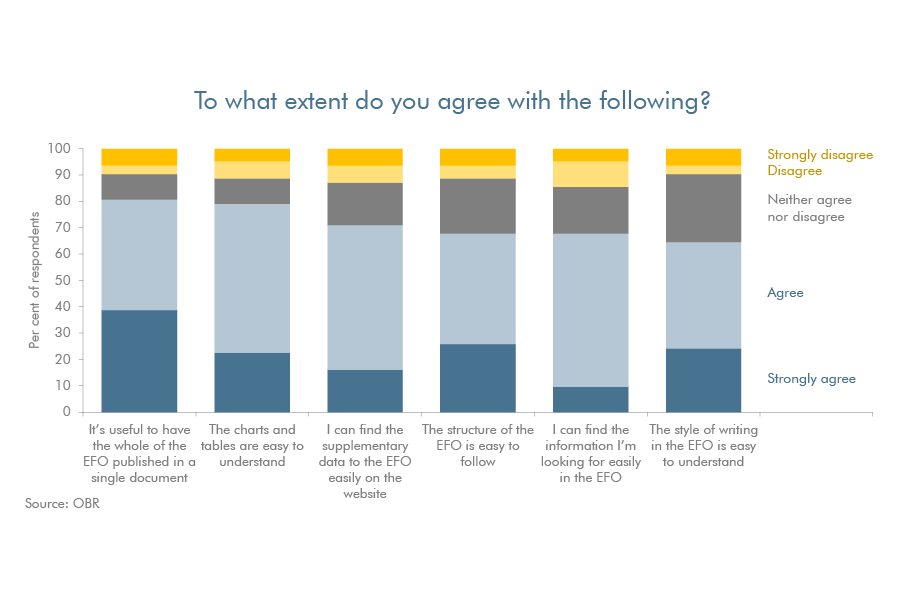
Looking at which parts of the EFO get the most attention, the most-read section was the executive summary, of which 71 per cent of users read most or all. This was followed by the economy and fiscal chapters, of which 44 per cent of users read most and or all. Chapters on fiscal targets and annexes on policy measures and balance sheet interventions attracted less attention, with only 27, 26, and 23 per cent saying they read more than half of these respectively. Regarding the overall length of the EFO, 48 per cent said that the document was too long, 40 per cent thought it was the right length, while only 8 per cent thought it was too short.
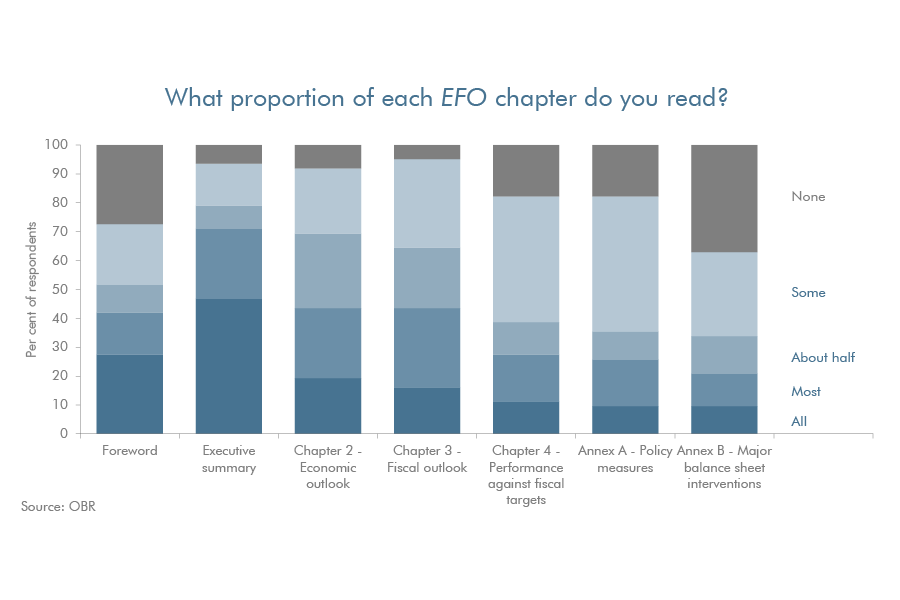
November 2022 survey
As a consequence of the unusual run-up to the 2022 Autumn Statement, our November 2022 EFO document was much shorter than usual at 63 pages, compared to an average length of 240 pages for our previous three EFOs. While it followed a similar structure to the traditional EFO, both annexes on policy measures and balance sheet measures were excluded, with the relevant material summarised in the main chapters or made available online. Another consequence was that we had to delay publication of some of supplementary material usually published on the same day as the EFO to the following weeks.
After the publication of our latest EFO on 17 November, we ran a follow-up survey to hear what our audience thought about the shorter EFO document, what they thought was missing from the report, and what they would like to see in future EFOs. There were 42 responses to this survey from a similar range of user groups.
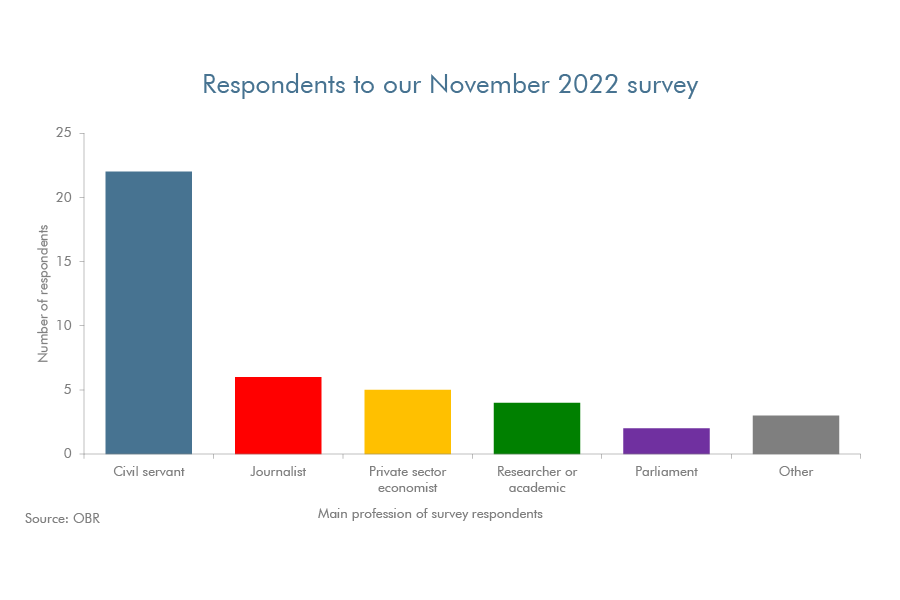
We asked our readers for feedback on the overall length of the EFO, content of individual chapters, and balance of material between the EFO document and supplementary information on our website. Here’s what we found:
The shorter EFO was preferred by many respondents. 45 per cent preferred a report that was no longer than that we published in November, and around four-fifths preferred a document that was less than 150 pages. Only 14 per cent wanted to see future EFOs return to 150-250 pages in length. Among the different groups of readers, government officials, academics, private sector economists and journalists prefer a shorter document, while parliamentarians and researchers preferred something longer.
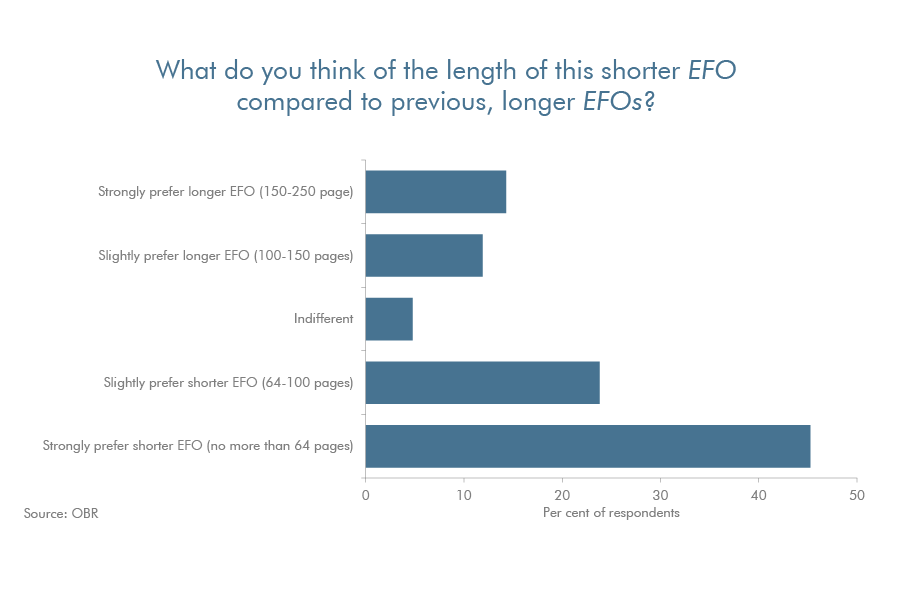
We also asked what was missed in the November 2022 EFO compared to previous EFOs. Boxes covering topical, self-contained analysis were limited to four in November 2022 compared with 15 in March 2022, and around 40 per cent of those who completed our survey suggested they missed the larger number of boxes found in past EFOs. Our more detailed scenario analysis – where we present alternative scenarios to demonstrate the uncertainty around our central forecasts – was also missed by a third of respondents. There was also demand for the return of our full policy annex which houses the detail on announced policy measures, as well as the detail normally provided on individual tax and spending forecasts.

Responding to the survey
We are very grateful to those who took the time to responded to both our user surveys. We will be taking action in response to your feedback in our next Economic and fiscal outlook. In particular, we aim to reduce the overall length of the report relative to its pre-November 2022 length, to clearly signpost and focus on the key elements of the forecast. At the same time, we will look to reintroduce the analysis and detail that our readers have requested to ensure we provide a comprehensive and transparent account of economic and fiscal prospects.
Our next Economic and fiscal outlook will be published on 15 March alongside the Chancellor’s Spring Budget.
